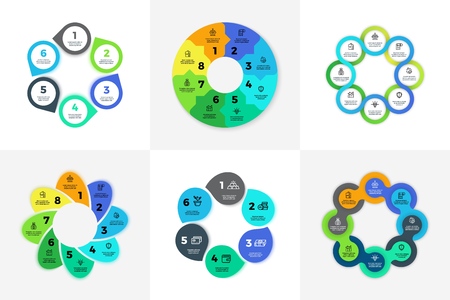1. Understanding Feng Shui: A Quick Overview for American Workspaces
Feng Shui is an ancient Chinese practice focused on arranging spaces to create balance, harmony, and positive energy—often called “chi.” While it may sound mystical, the basic principles of Feng Shui can be easily applied to modern American offices and workspaces to help boost productivity and well-being.
What is Feng Shui?
At its core, Feng Shui is about how your environment affects your mood, energy, and performance. It’s not about magic or superstition; it’s more about practical ways to set up a workspace that supports your goals. In the U.S., this means creating office environments that are both comfortable and efficient, encouraging creativity and focus.
Main Principles of Feng Shui
| Principle | What It Means for Your Workspace |
|---|---|
| Balance (Yin & Yang) | Create a mix of active (bright lights, open areas) and calm (plants, soft colors) elements. |
| Flow of Energy (Chi) | Keep pathways clear, avoid clutter, and make sure you can move around easily. |
| The Five Elements | Include wood (plants), metal (desk accessories), water (small fountain), fire (lighting), and earth (stones or ceramics). |
| Proper Placement | Arrange your desk so you have a clear view of the door but aren’t directly in line with it. |
Common Misconceptions About Feng Shui in the U.S.
- It’s Not Just About Decor: While design matters, Feng Shui focuses on how everything in your space works together to support productivity and reduce stress.
- You Don’t Need Special Objects: You don’t have to buy specific symbols or expensive items. Everyday office supplies and furniture can be used effectively.
- No Religious Requirements: Feng Shui is not tied to any religion. It’s simply a way to organize space for better results at work.
Why Try Feng Shui in Your American Workplace?
By understanding these basics, you can see how even small changes—like decluttering your desk or adding a plant—can have a big impact on your focus, motivation, and overall job satisfaction. This sets the stage for applying more detailed Feng Shui techniques tailored for American work environments in the next steps.
2. Adapting Feng Shui to Modern American Offices
Understanding the Unique Needs of American Workspaces
Modern American offices come in many shapes and sizes, from open-plan layouts to cubicles and even remote home workspaces. Applying Feng Shui principles in these environments can boost productivity, creativity, and overall well-being. Here’s how you can make simple changes that fit American office culture and typical workspace designs.
Feng Shui for Open-Plan Offices
Open-plan offices are popular in the United States, but their large, shared spaces can sometimes feel chaotic. Try these practical tips:
- Desk Position: Place your desk so you face the entrance or main walkway if possible. This is called the “command position” and helps you feel more in control.
- Dividers and Plants: Use low partitions or tall plants to create a sense of personal space and reduce distractions.
- Declutter Regularly: Keep your workspace tidy to encourage fresh energy (chi) flow.
Quick Tips for Open-Plan Offices
| Tip | Benefit |
|---|---|
| Add a small plant on your desk | Improves air quality and brings vitality |
| Use soft desk lighting | Reduces eye strain and creates a calming atmosphere |
| Avoid sitting with your back to busy walkways | Makes you feel safer and more focused |
Feng Shui for Cubicles
Cubicles offer more privacy but can sometimes feel cramped or uninspiring. Here’s how to refresh your space:
- Personalize Your Area: Hang up a favorite photo or artwork that inspires you.
- Add Greenery: A small potted plant can soften hard edges and add life to your cubicle.
- Balance Elements: Include items representing the five elements (wood, fire, earth, metal, water). For example: a wooden picture frame (wood), a red pen holder (fire), a stone paperweight (earth), a metal stapler (metal), and a blue mug (water).
Cubicle Feng Shui Element Ideas
| Element | Easy Addition |
|---|---|
| Wood | Bamboo plant or wood tray |
| Fire | Red notebook or lamp with warm light |
| Earth | Ceramic mug or stone decoration |
| Metal | Silver pen holder or metal organizer |
| Water | Navy blue mousepad or small fountain image |
Feng Shui for Remote Workspaces at Home
If you’re working from home, it’s important to separate work from personal life while still making your space productive. Try these ideas:
- Create Boundaries: Use a bookshelf or room divider to mark off your work area.
- Naturally Lit Spaces: Set up near a window if possible for natural light and better energy flow.
- Sit Facing the Door: This helps you stay alert and reduces stress during video calls or focused tasks.
- Tidy Up at the End of Each Day: Cleaning up signals the end of work time and keeps energy positive.
Home Office Setup Checklist
| Feng Shui Step | Description |
|---|---|
| Select a dedicated workspace | Avoid working from bed or couch; use a table or desk instead. |
| Add natural elements like plants or flowers | Keeps energy fresh and welcoming. |
| Avoid clutter under your desk or chair | Lets good energy circulate freely around you. |
| Keeps cords organized and out of sight if possible. | Makes the area feel less chaotic and more peaceful. |
The Bottom Line: Small Changes Make a Big Difference!
You don’t need major renovations to bring Feng Shui into an American workspace. Simple adjustments—like moving your desk, adding plants, or keeping things tidy—can help you feel more comfortable, focused, and productive no matter where you work.

3. Boosting Productivity with Desk and Workspace Arrangement
Applying Feng Shui in your American workspace is all about creating a comfortable, motivating environment that helps you focus and get more done. Here are some practical tips for arranging your desk and workspace to increase productivity while respecting both Feng Shui principles and American work culture.
Desk Placement: Where You Sit Matters
According to Feng Shui, the position of your desk affects your sense of control and energy flow. In the American office, these guidelines can help:
| Tip | Why It Works |
|---|---|
| Face the door, but not directly in line with it | Lets you see who enters, reducing distractions and promoting a feeling of security—key for staying focused. |
| Avoid sitting with your back to the entrance | This can cause subconscious stress; if unavoidable, use a small mirror to see behind you. |
| Choose a solid wall behind you | Gives a sense of support and stability—think of it as having someone “cover your back.” |
| Allow space in front of your desk | This represents opportunities coming your way, helping you feel open to new ideas. |
Ergonomics: Comfort Is Key for Focus
Feng Shui emphasizes harmony, which matches up perfectly with modern ergonomic practices. Here’s how to blend them:
- Adjust chair height: Keep feet flat on the floor and knees at a 90-degree angle.
- Monitor at eye level: Prevents neck strain and keeps energy flowing smoothly.
- Keep essentials within arm’s reach: Minimizes unnecessary movement, saving time and effort.
- Add a plant or two: Plants boost oxygen and bring natural energy into your workspace.
Organization Strategies: Clear Space, Clear Mind
A clutter-free desk is essential for productive work. Use these organization strategies to keep things tidy and efficient:
| Strategy | Description | Cultural Fit (U.S.) |
|---|---|---|
| Declutter daily | Toss unnecessary papers or items at the end of each day. | Keeps workspace professional and ready for action. |
| Categorize items by frequency of use | Keep daily tools close; store rarely used items away. | Makes workflow smoother and workspace less crowded. |
| Cable management solutions | Use clips or sleeves to tame cords under your desk. | A neat look aligns with American office standards. |
| Add personal touches mindfully | A family photo or inspiring quote is great—just avoid overdoing it. | Keeps workspace welcoming without becoming distracting. |
The Power Position Checklist for Your Desk Arrangement
- Your chair has a solid wall behind it (not a window or open space).
- You can see the door from where you sit, but aren’t directly in its path.
- Your desktop is clear except for essentials (computer, phone, notepad).
- You have something green (plant or image) in view for vitality.
- Your lighting is bright but not harsh—consider a soft desk lamp if needed.
4. Incorporating Colors, Plants, and Lighting for Positive Energy
Bringing Feng Shui into your American workspace isn’t just about furniture placement—it’s also about using colors, plants, and lighting to boost positivity and productivity. Here’s how you can align these elements with both Feng Shui wisdom and popular American design trends.
The Power of Color in Your Workspace
Colors set the mood in any room, especially at work. In Feng Shui, each color represents a different kind of energy. It’s important to blend these traditional meanings with shades that feel comfortable and motivating in an American office setting. Here’s a quick guide:
| Color | Feng Shui Meaning | American Trend & Usage |
|---|---|---|
| Blue | Calmness & Focus | Popular for tech offices & meeting rooms |
| Green | Growth & Renewal | Great for creative spaces and open-plan offices |
| Yellow | Optimism & Cheerfulness | Common in break rooms or collaborative areas |
| White/Neutral Tones | Clarity & Simplicity | Main choice for modern minimalist offices |
| Red (as an accent) | Energy & Passion | Used sparingly for branding or highlights |
Selecting Office Plants for Good Vibes
Plants bring life to your workspace and are loved in both Feng Shui and American office culture. They help purify air and create a sense of calm. Choose easy-care plants that thrive indoors:
- Snake Plant: Low maintenance and filters toxins from the air.
- Pothos: Grows well in low light—great for cubicles or corners.
- Bamboo: Symbolizes luck in Feng Shui; fits nicely on desks.
- Aloe Vera: Needs little water; handy if you forget to water often.
- Peace Lily: Adds elegance and helps clean indoor air.
The Importance of Lighting for Productivity and Well-Being
The right lighting makes a big difference. Natural light is best, but it’s not always possible. Combine overhead lights with desk lamps to reduce eye strain and create a more inviting atmosphere. Here are some tips:
- Maximize natural light: Keep windows clear of clutter and use sheer curtains.
- Add adjustable desk lamps: Let each team member control their own light level.
- Avoid harsh fluorescent lights: Go for warmer LED bulbs that feel more natural.
- Create layers of light: Mix ambient, task, and accent lighting for comfort and flexibility.
Culturally Relevant Choices Matter
Merging Feng Shui principles with American design tastes makes your workspace feel welcoming for everyone. Pick colors that match your company brand, choose plants that fit your office vibe, and use lighting that supports long workdays without draining energy. These simple steps can make your workspace both balanced and uniquely yours.
5. Maintaining Balance and Professional Boundaries
When you bring Feng Shui into an American workspace, it’s important to balance these principles with your company’s policies, respect for privacy, and the open, collaborative style common in many U.S. offices. Here’s how you can harmonize Feng Shui ideas with workplace norms:
Understanding Company Policies
Every organization has its own set of rules about personalizing workspaces. Before making any changes, check your employee handbook or ask your HR department about what’s allowed. Some workplaces welcome plants and small décor, while others have restrictions for safety or uniformity.
Common Policy Considerations
| Feng Shui Element | Possible Restrictions | Tips for Compliance |
|---|---|---|
| Plants | No live plants (allergies, maintenance) | Choose small artificial plants or photos of nature |
| Water features | No fountains (noise, spills) | Use desktop images of water or blue accents |
| Personal items | Limit on number/size | Select a few meaningful objects that fit guidelines |
| Mirrors or crystals | Potential distractions/glare | Place them out of direct sight lines or use smaller versions |
Respecting Privacy Standards
Open-plan offices are popular in the U.S., but they come with shared spaces and limited privacy. While Feng Shui encourages clear desk layouts and personal touches, be mindful not to infringe on your coworkers’ space or distract them with overly bright colors, strong scents, or noisy items.
Tips for Shared Spaces
- Keep decorations on your desk only; avoid hanging items on shared walls.
- If you want to play soft background music or use essential oils, check with neighbors first.
- Avoid clutter—organized spaces benefit everyone’s focus and energy.
- If you need more privacy, use a small screen or plant as a gentle divider instead of building barriers.
Collaborating While Keeping Balance
The American workplace values teamwork and flexibility. Use Feng Shui to support group harmony by arranging communal areas for easy flow and positive energy. For example, round tables promote equality during meetings, and well-lit break rooms encourage relaxation and creativity.
Cultural Sensitivity in Decor Choices
- Select universally appealing colors like green for growth or blue for calmness.
- Avoid symbols or items that may be confusing or uncomfortable for colleagues unfamiliar with Feng Shui traditions.
- If you’re unsure about adding something new, suggest it as a team improvement project so everyone can contribute ideas.
This balanced approach helps you boost productivity through Feng Shui without crossing professional boundaries or company guidelines.


